Table of Contents
Customer education helps your customers better understand how to use your product or service, and it can be remarkably effective.
A study commissioned by Adobe showed that of businesses with customer education programs, more than 75% saw an increase in product adoption. Additionally, 63% saw lower support costs and 58% had a reduction in customer turnover during a set period.
While these are exciting numbers, the study had a small caveat: customer education can boost your business…when it is done properly. This means you need a good strategy to see the numbers you hope for. Luckily, setting up a strong customer education initiative is well within your reach.
In this article, we guide you through what customer education is and detail its many benefits. We also offer some real examples from successful businesses and top tips for creating the best customer education program for your business goals.
What is Customer Education?
Customer education can take many forms, but they all share a common purpose: to educate, onboard, engage, and retain new and existing customers. Businesses (mostly SaaS companies) use customer education to equip customers with the information and skills they may need to use their product or service to its full potential.
Customer education content can range from comprehensive how-to guides and video tutorials to interactive webinars, detailed FAQs, product walkthroughs, and community forums or in-person training.
While customer education often overlaps with customer training, it differs in purpose.
A customer education program offers resources to help users understand a product or upskill in an industry. A customer training program focuses on structured teaching of a specific skill for a specific product. Both, however, are focused on customer success.
Having a strong customer education strategy can lead to improved customer success overall, especially if you have:
According to McKinsey & Company, creating an excellent customer experience can boost your profitability, which is one of the many benefits of using customer education for your business.
The Benefits of Customer Education
Effective customer education can enhance your overall customer experience. But what does that translate into for your business? What are some other benefits of building a customer education program?
Businesses that use effective customer education programs may see:
To see what these benefits look like in practice, it can help to see some real examples of customer education programs. Below we’ve listed several customer education examples from prominent companies.
Effective Customer Education Examples
Grab your pen and take some notes, these examples of successful customer education programs will help you get inspired to create or improve your customer education program.
HubSpot Academy
American company HubSpot develops and markets software products focused on inbound marketing, sales, and customer service. To help onboard new customers and give them the support they need, it offers HubSpot Academy.
HubSpot Academy has 100% free educational content on topics like email marketing software, social media marketing, and more using training content like webinars, blogs, and guides.
Several of their courses offer industry-recognized certification upon completion, which boosts their learners’ credibility. Some globally recognized certifications they offer include:
One great feature of HubSpot Academy is that users have instant access to the chatbot, which I was able to quickly use to narrow down the best course options for me.
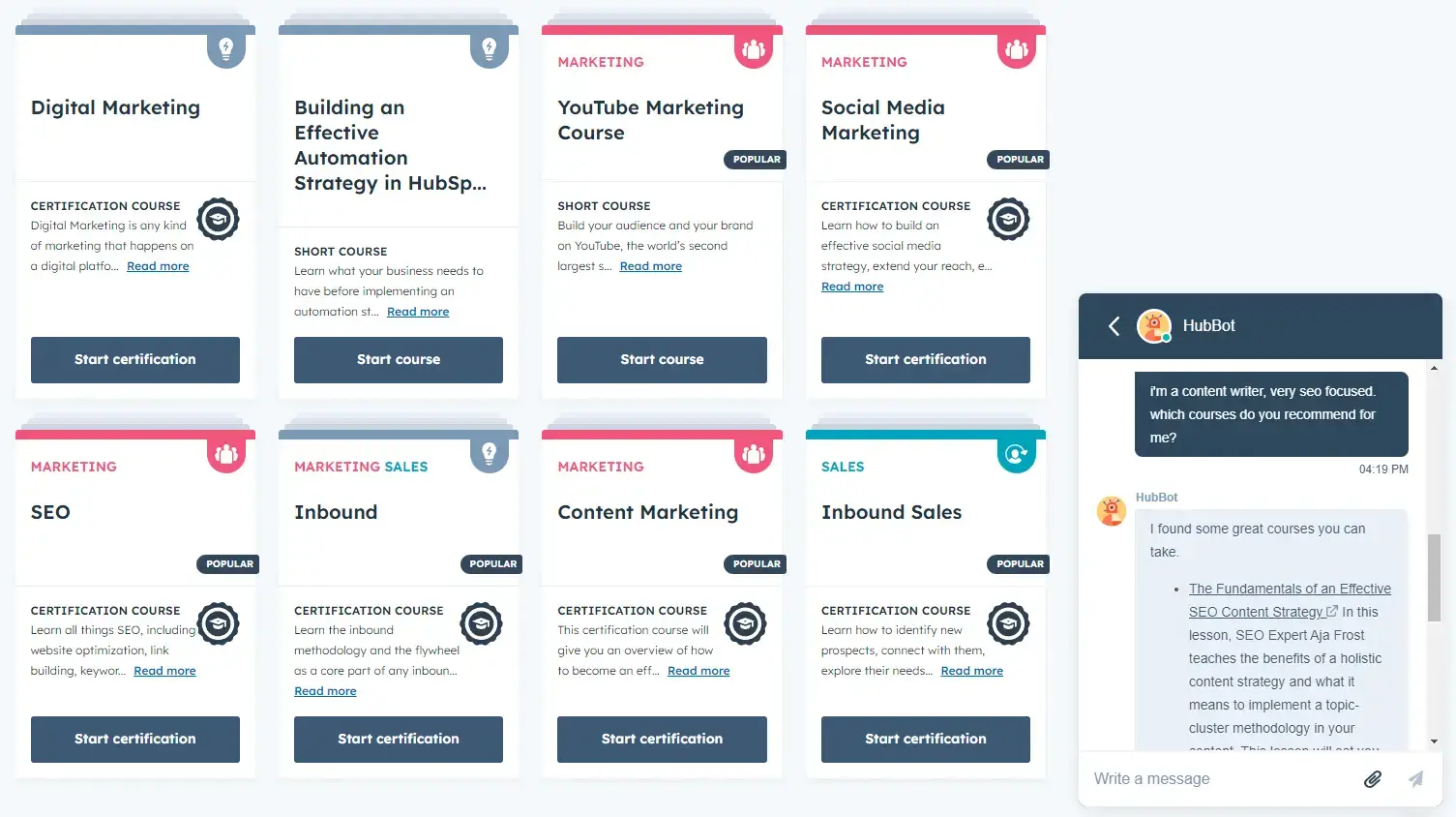
Salesforce Trailhead
Salesforce is famous in the customer relationship management (CRM) software space and offers its Trailhead as a way to “Skill up for the future.”
Salesforce positions Trailhead as a fun way (think gamification, badges, and points) for users to learn in-demand skills, resume-worthy credentials, and certifications.
Their training materials include interactive modules that have quizzes and challenges to encourage learners to use their new-found knowledge in the real world. The platform also uses badges and points to motivate continuous online learning in a fun and engaging way.
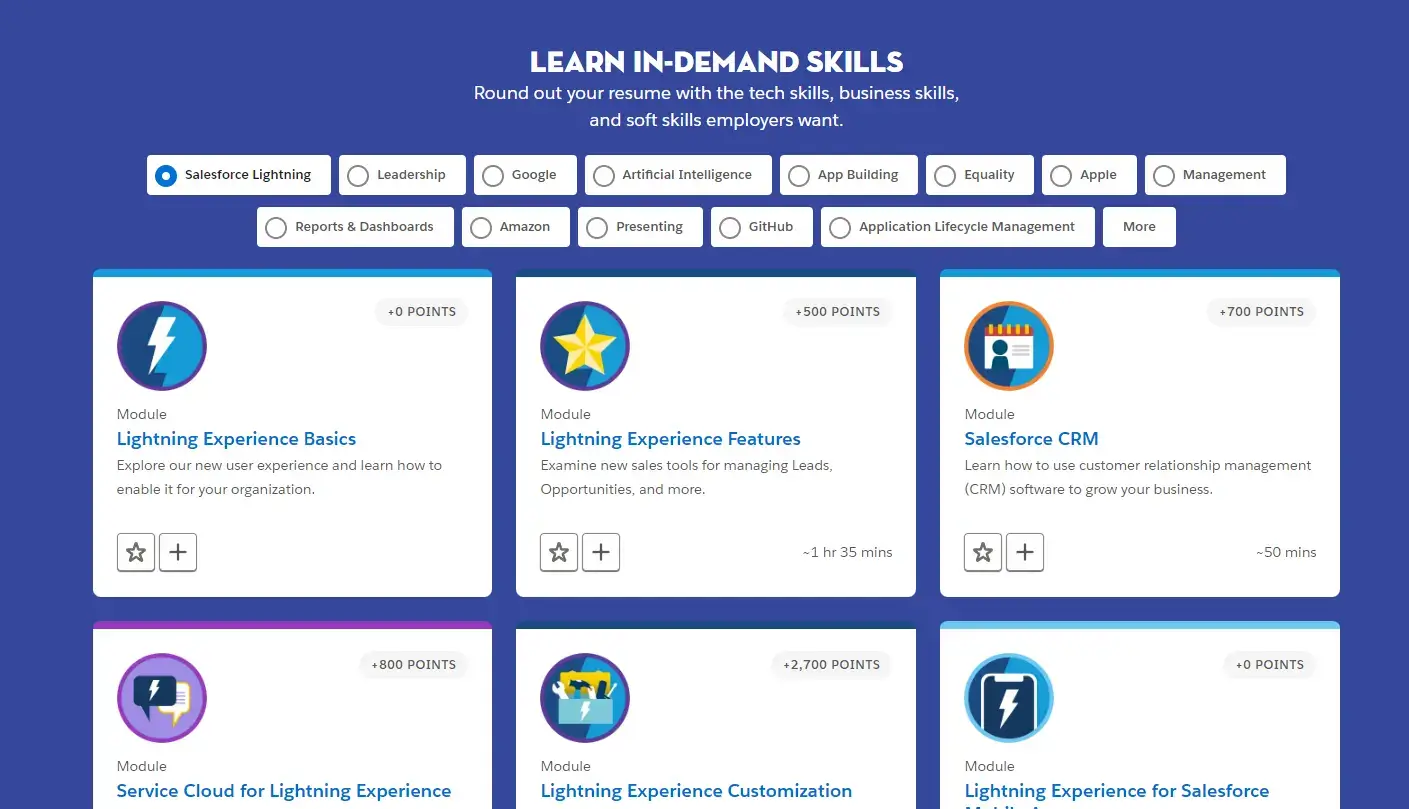
LearnWorlds Academy
As a premium all-in-one online learning platform, LearnWorlds specializes in creating, selling, and marketing online courses centered around the learner’s experience. As a way to support educators, coaches, trainers, and businesses, LearnWorlds offers LearnWorlds Academy.
The online academy is “The one-stop source for all things LearnWorlds.” Membership is free, and with it, learners have access to a wide range of free courses and resources.
LearnWorlds creates a comprehensive customer education experience by offering a multitude of learning formats including video lessons, articles, case studies, and interactive quizzes.
Some popular courses it offers include:
To help support customers even further, LearnWorlds also provides:
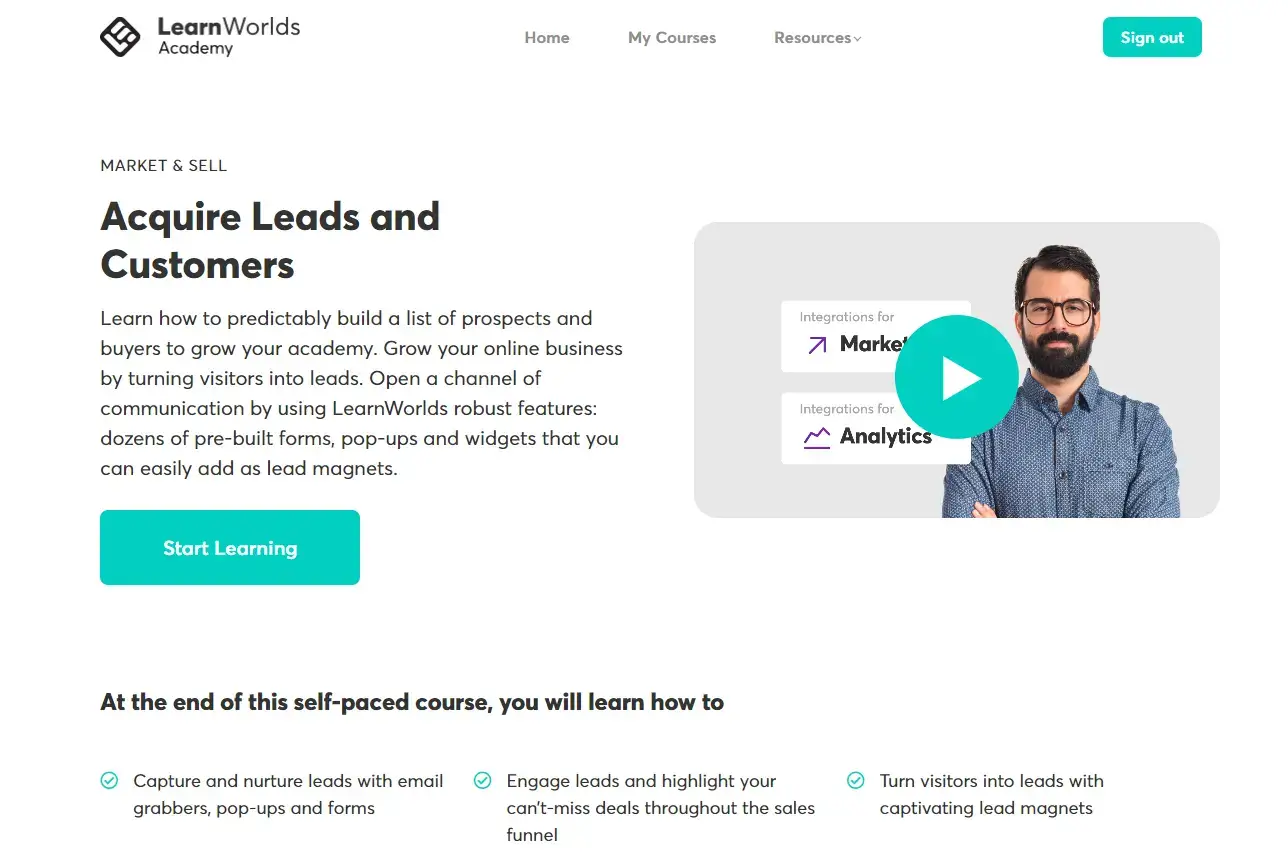
LinkedIn Learning
Professional networking platform LinkedIn offers LinkedIn Learning to help its users increase their knowledge base and get the most out of the platform. To do so, it offers personalized and guided learning tailored to fit learners’ careers.
It has a vast library of courses (around 23,300) from nearly four thousand industry experts and thought leaders on topics ranging from business to tech to the creative fields.
To motivate and engage learners, LinkedIn Learning features:
Learners can even customize their search for relevant courses by inputting their job title and industry when using the search function.
Unfortunately, LinkedIn Learning isn’t free. Learners do have access to ten free courses per month with a LinkedIn premium subscription or they can opt to buy a Learning subscription. Either way, learners get a free month-long trial to sample the educational content before they commit.
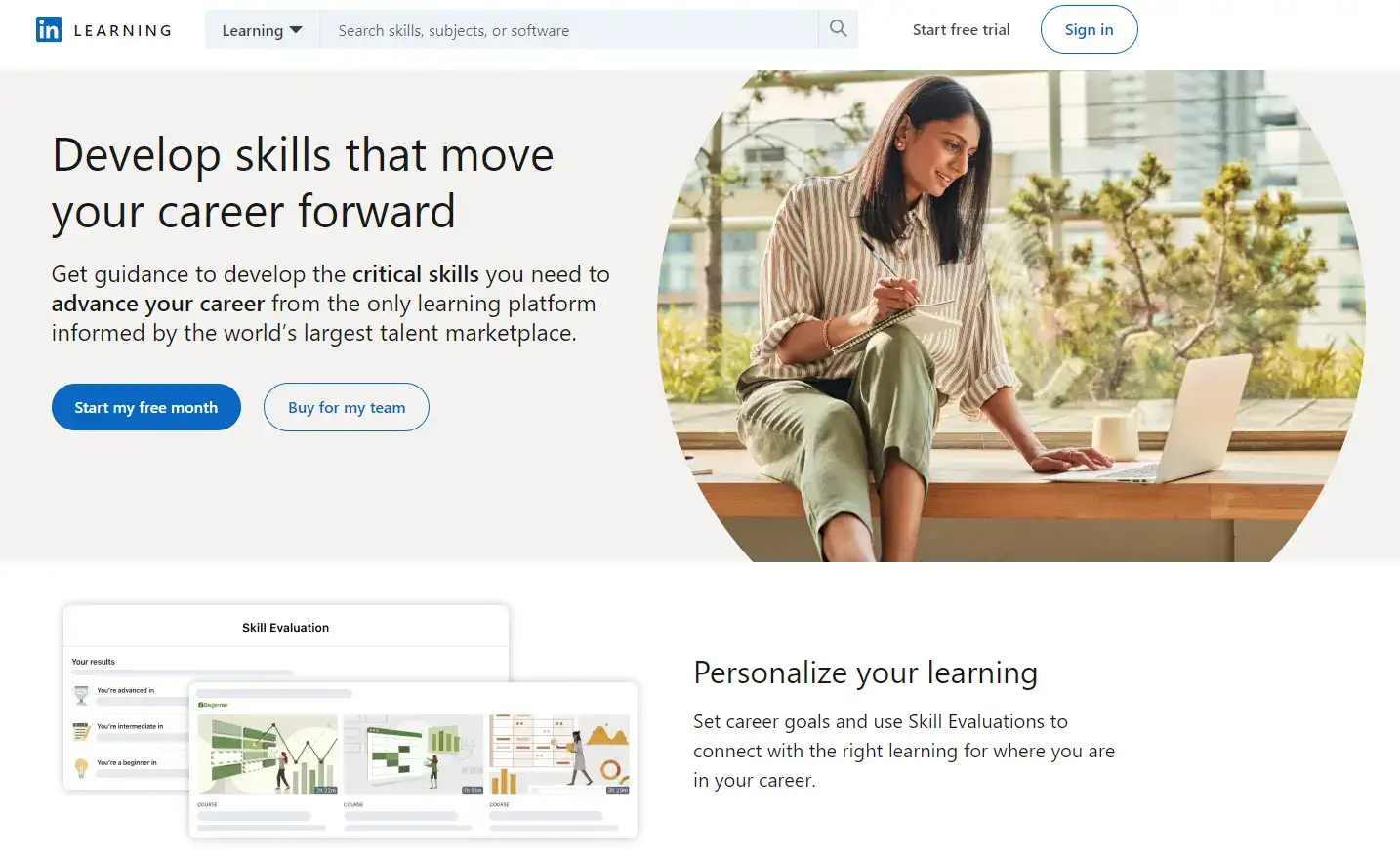
Canva Design School
Canva is famous for its mission of making graphic design approachable and user-friendly for everyone. Canva Design School takes this one step further by offering free courses that walk users through how to use the platform to its fullest potential.
Canva’s courses are interactive, using hands-on tutorials to walk learners through topics and techniques step-by-step. Popular tutorials include Create Videos with Canva, Managing Content in Canva, and Create Websites with Canva.
Canva uses a combination of video learning and interactive lesson activities to maintain customer engagement. And like other customer education programs, Canva also offers its learners official certificates. At the time of writing, learners can take tests to earn certifications in:
Canva’s Design School is completely free, and learners can take advantage of its offerings without creating an account. The only exception to this is the certification program which requires users to be logged in with a free account.
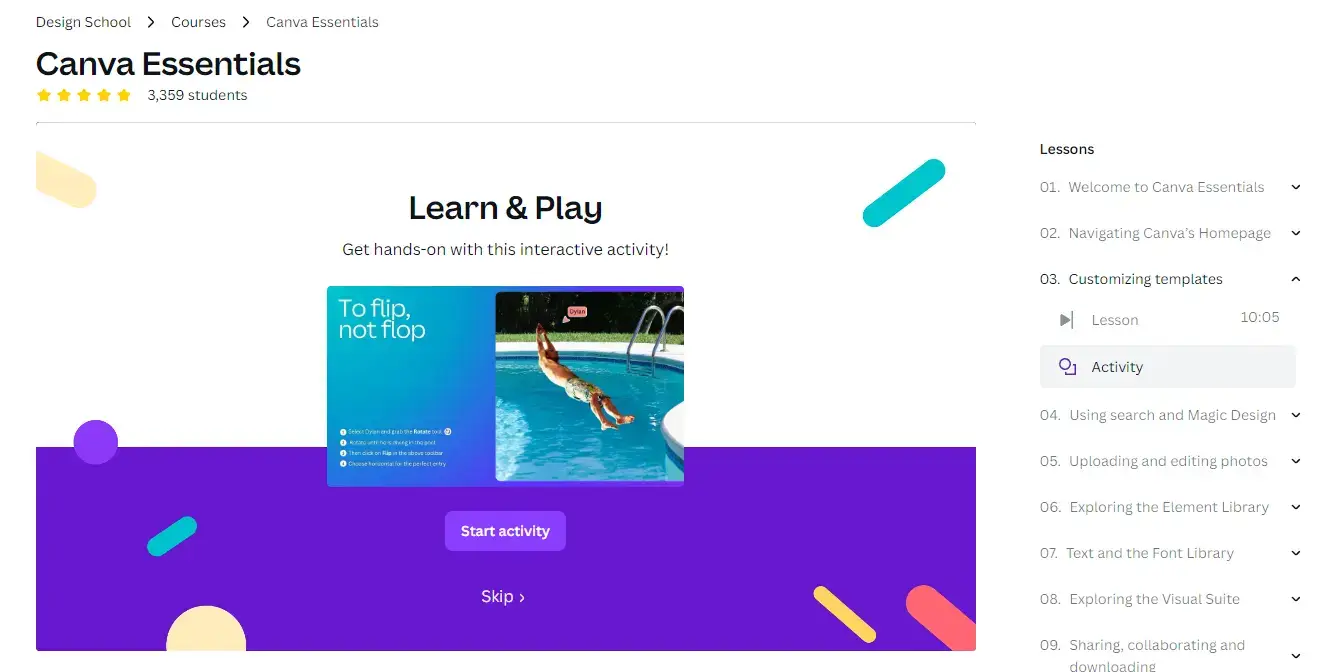
Slack Success Hub
Slack is a messaging app mostly used by businesses and online communities to communicate and collaborate. It boasts a host of features for connecting teams no matter their location and to maximize its benefits for its users, it offers the Slack Success Hub.
The Success Hub has resources for beginner Slack users all the way to their advanced Slack Champions, meaning there are plenty of opportunities for its users to upskill on its platform.
Courses range from User Onboarding to Slack for HR, Recruiting, and DEI training and learners can earn badges and certifications for specific courses. In addition to courses, the Success Hub supports user learning through:
To take advantage of the Slack Success Hub, users need to have an account with the platform.
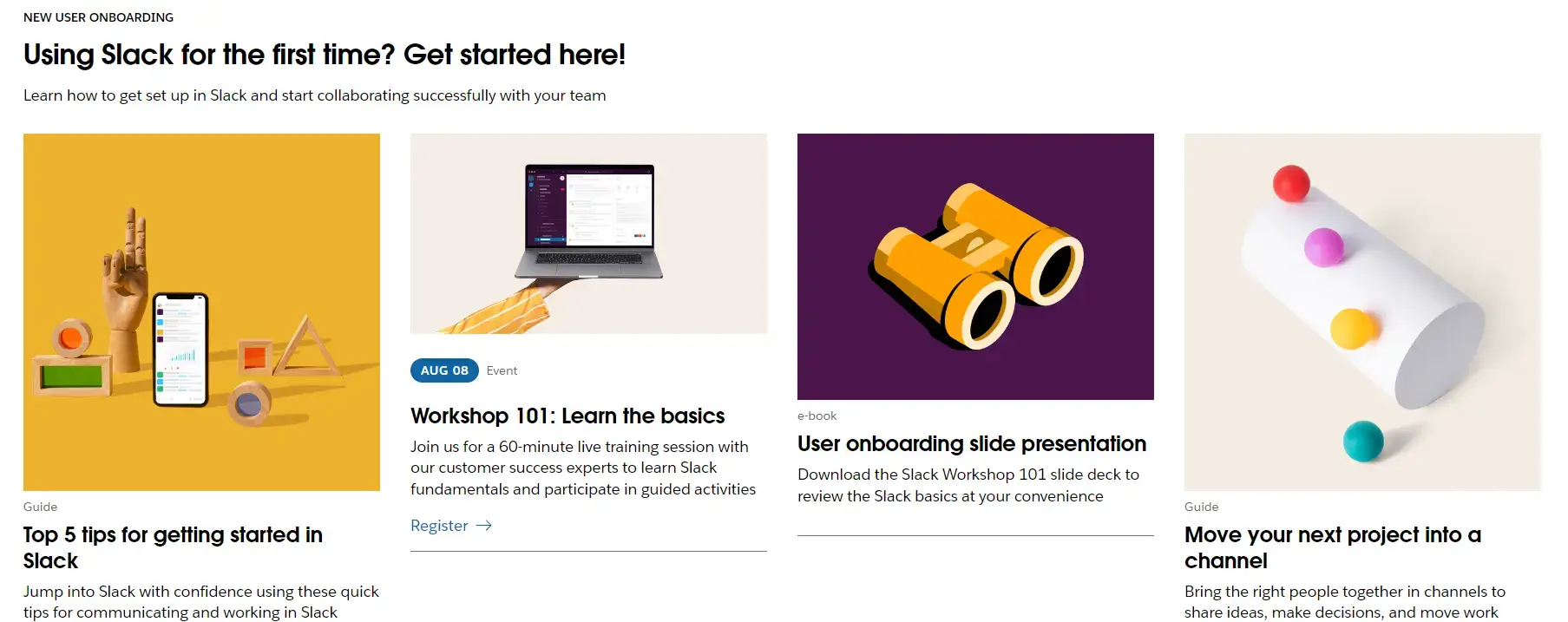
Zendesk Training
Zendesk positions itself as “The complete customer service solution” and provides software-as-a-service (SAAS) companies products designed to improve the customer experience. Its Zendesk Training is designed to ease users into leveraging its products to their fullest potential.
Zendesk Training offers both free and paid options, with the paid options leading to the possibility of becoming Zendesk Certified. For free options, learners can browse and choose courses and resources according to their company positions, such as admins, agents, or developers. Zendesk Training offers a wide range of certification options, including:
Despite having a vast course catalog, Zendesk Training makes it easy for learners to filter for and bundle courses to suit their specific needs.
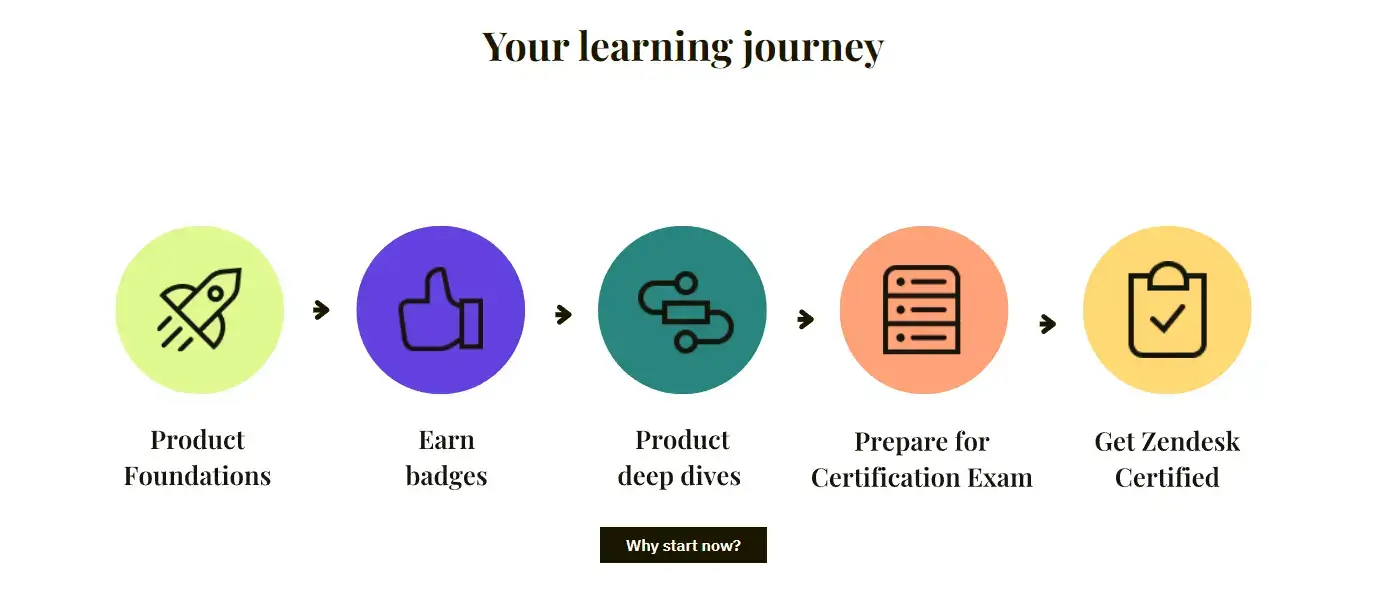
Tips for Creating an Effective Customer Education Program
A customer education program can be a strategic investment that helps you reach your business goals. With a solid program, you stand to increase overall customer satisfaction, reduce your support team costs, and make it easier for customers to use and enjoy your offerings.
💁 Check out our article on Customer Enablement: Why It Matters & Best Practices
Here are some top tips for implementing your customer education program:
Establish clear objectives
Define clear goals for your program and outline the outcomes you wish to see. These could be to increase sales, improve learner retention, or improve your customer onboarding process.
Ask yourself: What are my primary goals for the program, and how can achieving these goals impact my business success?
Analyze your audience
Take an in-depth look at your users and put them into groups. These groups could be based on things like their knowledge level, job role, industry type, or use case (how they use your products). Clearly defining these groups can help you develop content to address their needs.
Ask yourself: Who uses my product and what are their specific needs and pain points?
Choose an LMS
You need a reliable LMS (learning management system) for your program, so look for one that meets your customer needs and your program objectives. The best LMSs offer analytics and integrations and are highly customizable.
Ask yourself: Does the LMS offer analytics and can I customize it to offer various content formats like videos, tutorials, assessments, and gamification options?
Start developing content
Using your goals and audience analysis as the backbone, start developing the content for your course. Try to offer a wide range of learning formats like videos and tutorials, group learning, mini-lessons and webinars, and assessments.
Ask yourself: How can I make maintain customer engagement through my educational content?
Incorporate certifications and badges
Using some sort of reward system for learning is an excellent way to motivate learners and keep them involved. Badges and certifications are both great ways for learners to feel acknowledged for their efforts and to measure their progress.
Ask yourself: What certifications/badges would my users find most valuable?
Don’t forget accessibility
Make your program accessible and inclusive to all users. Use a variety of learning formats, offer subtitles and transcripts for videos, and if you can, offer translations to expand your reach to speakers of other languages.
Ask yourself: How is the learning experience for my customers? Is it accessible to all learners?
Promote your program
Consider how you can promote your program to first-time users and return users. For instance, using social media and testimonials can be a way to attract new learners, and using email lists to inform current users about new courses can encourage continuous learning.
Ask yourself: How can leverage the tools I already have in place to attract and retain learners?
Analyze and iterate
This is where having an LMS with analytics is so important. You need to measure the success of your program to know how you can improve it. Use the metrics from your LMS to see what is working and what isn’t, and adjust accordingly.
Ask yourself: What will be my key performance indicators (KPIs) and metrics for measuring success?
These tips will help you build a customer education program that is both valuable to your learners and helps you grow your business. Throughout the process, don’t forget to circle back to the very beginning and stay connected to your goals.
Ready to Use Customer Education to Scale Your Business?
An effective customer education program can be a game changer for your brand. As we’ve seen through the examples in this resource, educating customers can do wonders in many areas of your business.
Use it to improve customer satisfaction, reduce support tickets, and ease product adoption for your users. By educating and empowering your customers, you increase loyalty for your products and growth for your business.
Get your free trial with LearnWorlds today and start educating your customers!
Further reading you might find interesting:
Learn more about:

Ciera Lamb
Ciera is a freelance content writer and editor connecting companies with their ideal audiences through blog articles and other online content. She approaches her writing with curiosity and research and enjoys the ever-present learning that comes with being a content writer. She is also an avid scuba diver, an aspiring Dutch speaker, and lover of all things nature.

